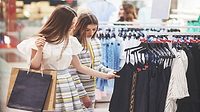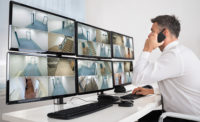Improving retail security with video analytics

Image via Unsplash
For as long as video cameras have been around, retailers have utilized them as tools to keep their businesses, employees and livelihoods safe. Like most technology, video cameras have evolved over the years — gone are the grainy images recorded to VHS tapes, replaced by high-definition videos equipped with edge analytics capable of real-time action and the ability to send metadata for analysis in the cloud. Beyond the obvious improvements in image quality, the hardware itself is also more accessible and modern chipsets feature significantly improved processing power, enabling businesses to run advanced new analytics that offer operational efficiencies and clear ROI. These factors have combined to push video surveillance into a new era, and the potential benefit for retail businesses is immense.
Surveillance and beyond
It’s first important to consider surveillance from a security perspective. Modern video analytics can help enhance the value of existing video surveillance systems, keeping businesses safer than ever. Analytics can track anomalies like loitering, late-night trespassers and unidentified objects, as well as suspicious behavior such as the same person approaching a store repeatedly without entering. Upon detection, the system can automatically send a notification to the appropriate security personnel, letting them know that a potential security incident is in progress and allowing them to take preventative action. They can even trigger an automatic alert to a speaker which can play a prerecorded message that deters potential threats. Cameras can also detect and alert on things like smoke and fire, keeping businesses safe from disaster even when people aren’t around.
Loss prevention alone represents a $100 billion problem in the retail industry, and analytics designed to identify suspicious and dangerous behaviors can put a serious dent in that number. However, video analytic solutions now have applications that go far beyond security. Yes, they help keep businesses safe, but they can also be used in other ways that propel businesses to greater commercial success. Consider everything cameras see beyond just thieves and vandals: customers shopping, employees going about their duties and shelves stocked with products. Applying analytics to observe, track and analyze those things can provide valuable insights for businesses.
Breaking new ground
Heat mapping is a great example to start with, as it detects when and where people are. Over time, and with enough data collected by the cameras in place, those analytics can reveal important facts about a store’s customers. For example, heat mapping can identify where people are lingering and which products are drawing their attention. Other analytics like queue monitoring analytics extremely useful when it comes to identifying when lines are forming in real-time and then sending an alert to employees instructing them to open another register or send someone to provide additional assistance.
On a similar note, people counting analytics can help businesses identify patterns in customer activity, allowing them to allocate employees more effectively, bringing on additional staff members during peak hours and sending them home during lulls. Object recognition analytics can also identify empty shelves, notifying employees that a popular item needs to be restocked — or possibly reordered.
It's all about experiences
Retailers strive to create a welcoming environment that makes people want to come back. Consider how online advertising works: if a user clicks on something once, or lingers on a product while scrolling, suddenly they will see advertisements for that thing popping up on every site. Video analytics offer retailers the chance to leverage customer insights in similar ways. If multiple customers are stopping at the same display but aren’t purchasing the item, that display might be in the wrong place, or communicating the wrong message — or it might just contain the wrong item entirely. If something isn’t selling, retailers can analyze where it is in the store and see how many eyes are actually seeing that product. In addition, video analysis of customer movement and flow can determine how well a store is laid out, and if customers are having difficulty navigating it. That information can help stores eliminate choke points, rearrange poorly placed aisles and displays and alleviate other trouble spots that frustrate customers.
But it’s not just about customers — video analytics can help with employee experience, too. By using tools like heat mapping and queue management to improve staffing decisions, stores can help ensure that employees aren’t overwhelmed during busy periods. That doesn’t just improve efficiency — it makes employees happier and ensures customers are receiving the help they need. This is important to communicate to employees. Video analytics aren’t a “gotcha” designed to catch employees taking a breather, they can help staff the store more effectively and ensure that no employee is hung out to dry manning the store with no help during high-traffic hours.
Getting the most out of surveillance
Video surveillance is as critical as ever, and it will continue to play a central role in retail security. But retailers are increasingly recognizing that the devices they already have in place to protect their stores can be utilized in ways that aid in business intelligence and operations, too. Used properly, video analytics can help businesses grow and thrive by delivering excellent customer experiences, supporting staff members by helping them perform their duties more effectively, and increasing overall operational efficiency. Modern video analytics can help retailers ensure that their stores are set up for success in every way.
This article originally ran in Security, a twice-monthly security-focused eNewsletter for security end users, brought to you by Security magazine. Subscribe here.
Looking for a reprint of this article?
From high-res PDFs to custom plaques, order your copy today!






